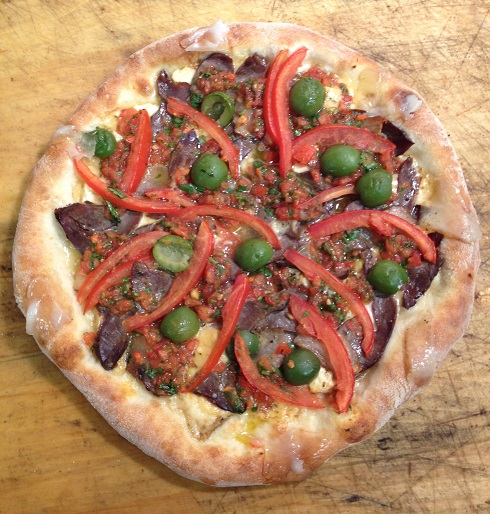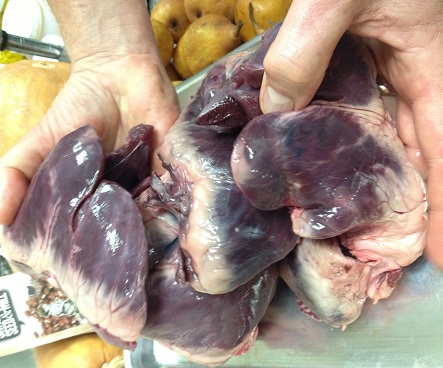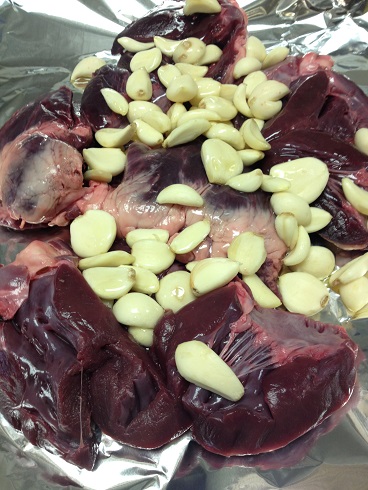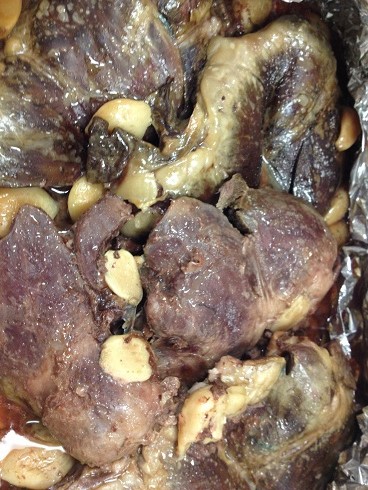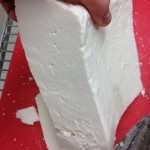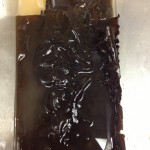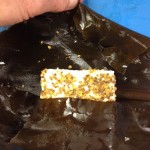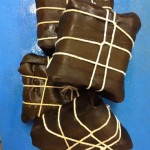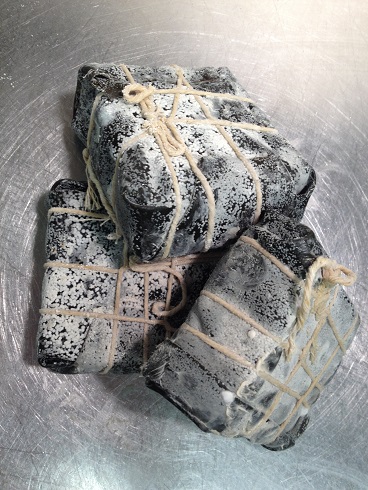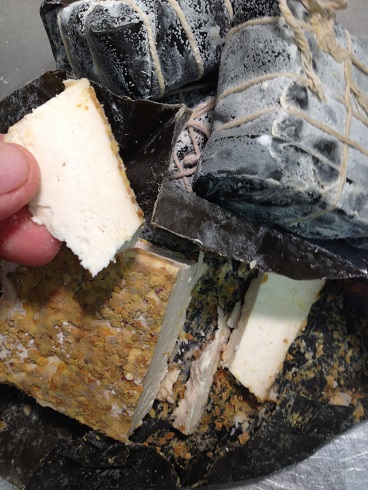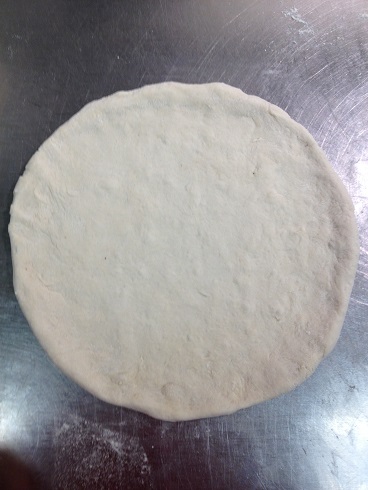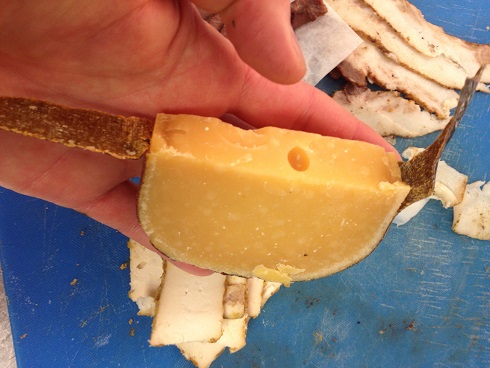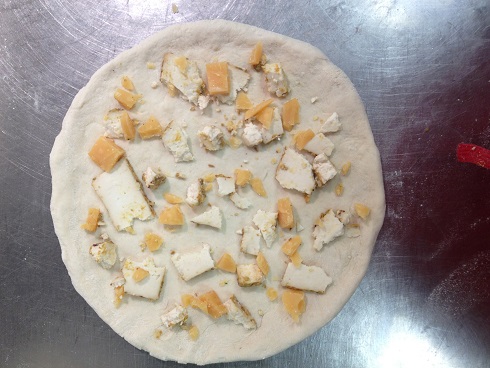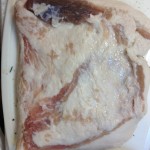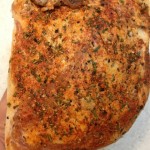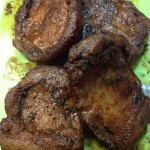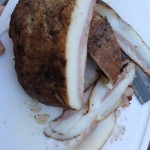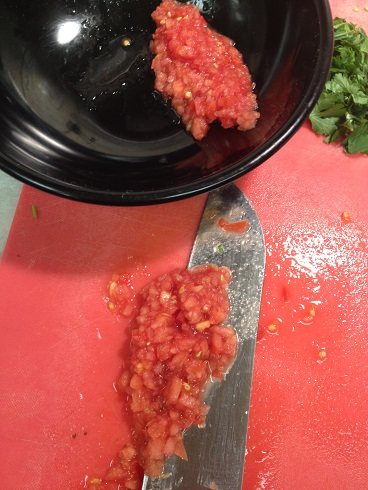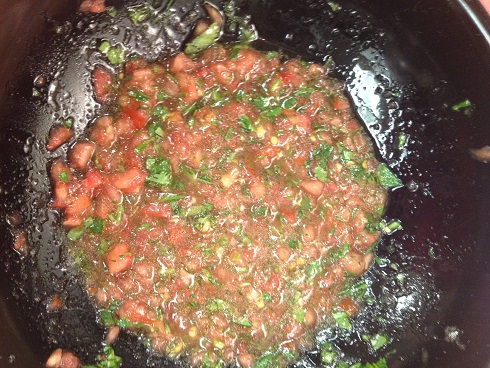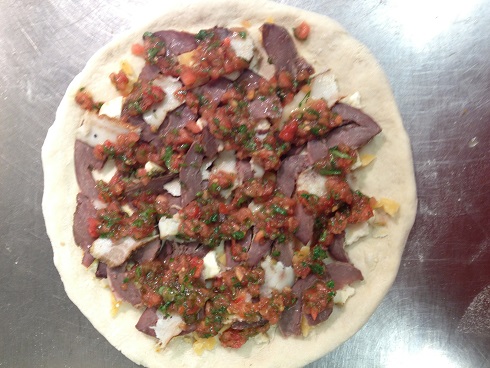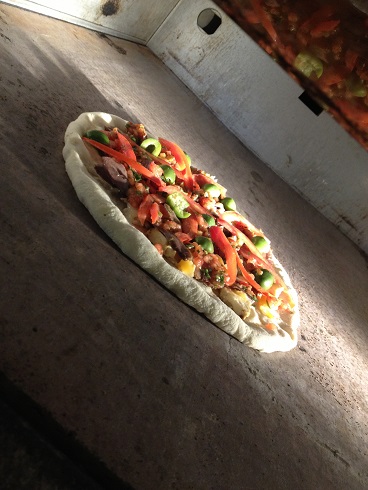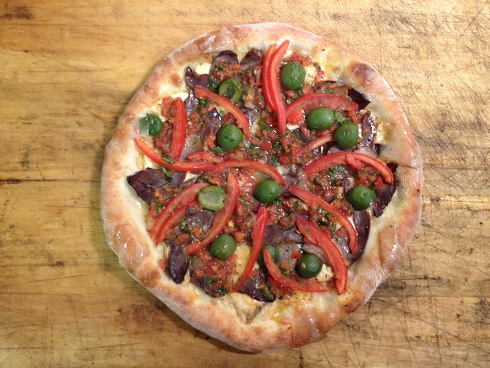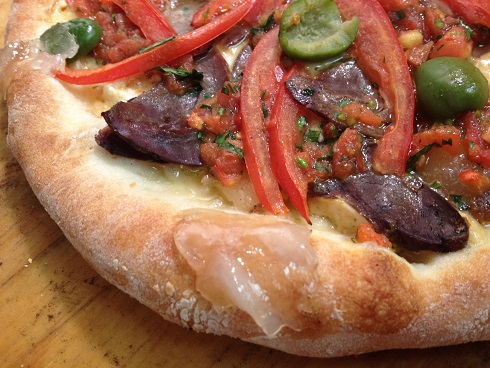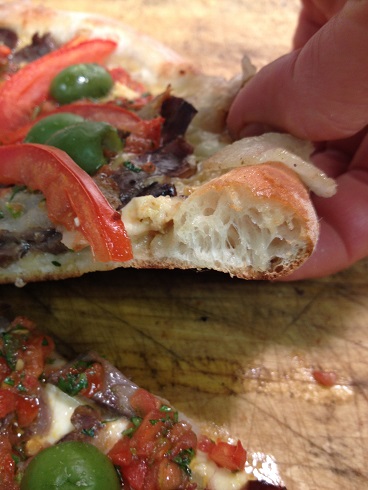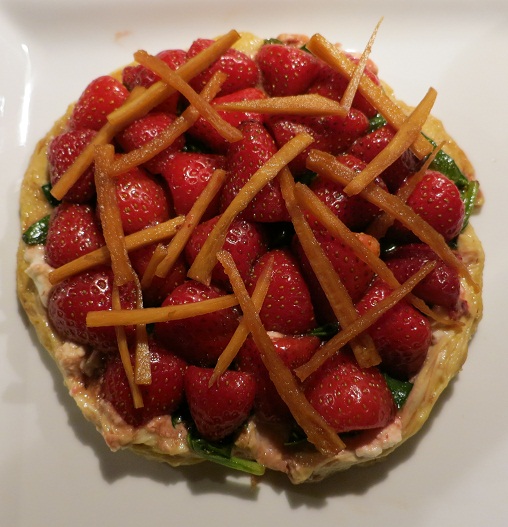
This is a great pizza appetizer that pairs the sweet balsamic-macerated strawberries I’ve sourced from Vest Berries and Cowdery Farms with local burdock pickles, New Zealand spinach and the luscious aged chevre from Integration Acres. It is also gluten-free and wheat-free thanks to a yuba base proving again that great pizza can take on all forms, shapes, tastes and profiles. Vive la difference!
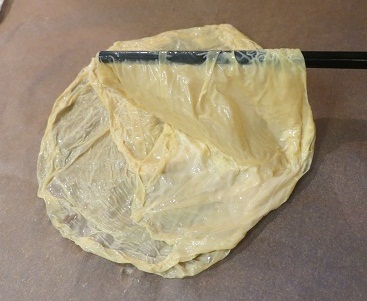
Yuba has been used in Japan for a thousand years in a variety of forms. It is the skin that accumulates on the top of almost-boiling soy milk. Most yuba is still made in mom and pop shops in Japan, Korea and China and sold in dried sheets or cut up in many different forms. It is a delicacy in Japan, especially when freshly made, (Nama-yuba,) or in shojin ryori, (Buddists monks vegetarian cooking.) The dried stuff is usually used in broths and soups and is the specialty of Kyoto in the kaiseki tea ceremony.
The taste of fresh yuba, (besides tasting of soya-daaaaa,) is delicatley sweet like a cross of fresh cream and mild cheese. It has an egglike texture and I get subtle hints of tapioca and far-off malt. The best thing about yuba is that it is higher in protein than any soy product and is low in calories with no cholesterol. A super food indeed.
Lately, some great chefs are incorporating yuba in thier menu-mix. Nobuyuki Matsuhisa of Nobu fame makes yuba-wrapped tofu, yuba shashimi and even a yuba sauce with kudzu powder as a thickening agent. There are also chefs creating yuba-skin-like variants like Renee Redzepi, Chef and Co-Founder of Noma restuarant in Copenhagen and one of the most innovative chefs on the planet. He uses cream, milk protein and full-fat milk to make his delicious “Milk Skin” and rolls it like a small stromboli in his Musk ox, fresh young garlic, milk skin and carmelized garlic recipe and his pairing of milk skin with salsify, rapeseed and truffle puree looks spectacular- I’ve yet to find truffles around here but there’s still hope to try that one.
Making yuba yourself is one helluva experience. It’s like the proverbial joke about hiking way up into the mountains to find the old monk to tell you the meaning of life and when you get there, he tells you that true happiness lies only in the climbing. The time it takes to make a single sheet of yuba is, at first, traumatizing for someone like me with no time on thier hands and a penchant for immediate pizza gratification. Each sheet takes about seven to eleven minutes to solidify atop the steaming soy bath and as you pull each of the crepe-like sheets out, the temptation to spritz with soy sauce and gorge the yuba in one bite becomes quite annoying.
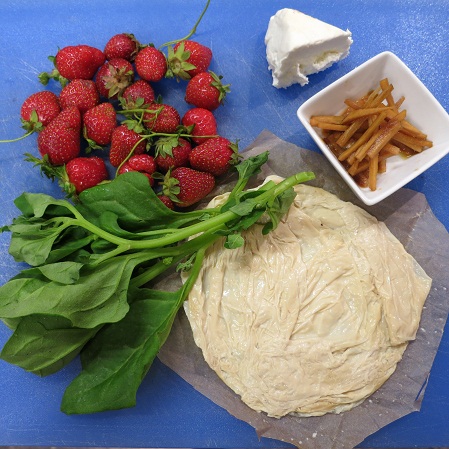
On my nama-yuba pizzette is a cheese called “Griffins Dream” made by my friend Chris Schmiel, owner of Integration Acres. It is an aged chevre, (or creamy goat cheese,) in the Sainte-Maure tradition. On top of the cheese, I’ve selected the crunchy New Zealand spinach, or “Kokihi” in the Maori language. This is my favorite green in the hot days of summer and I usually use it with juicy summer tomato salads because the crunch of the leaf and vine hold up strongly when drenched in juice. The fresh strawberries are from Rick Vest, a great farmer who owns Vest berries (as well as the spinach.) These brilliant red gems are macerated in sugar and balsamic vinegar and topped with some burdock, (gobo in Japanese,) pickled in soy sauce and maple syrup.
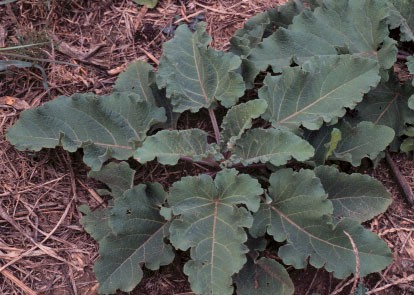
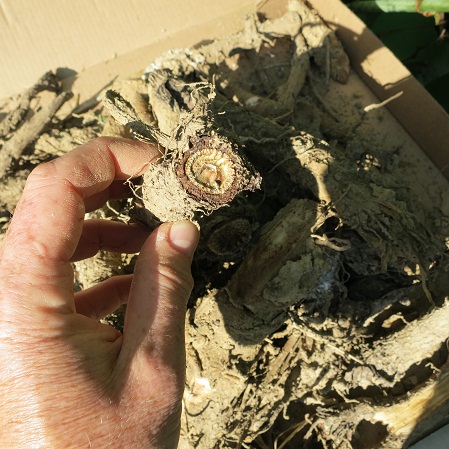
Burdock grows wild around Ohio like crazy probably because people “round “ere” don’t eat it. I got a huge load from the Amish in Chesterhill who were weeding thier asparagus patch. They only use the burdock as a poltice for healing and thought I was crazy for wanting to eat it. It was first introduced to Japan from China and is also used in herbal medicine. It’s main nutritional content is sugar but it’s also high in fiber and calcium. Wild mountain burdock is smaller than regular gobo and is called Yamagobo. It is Japans most popular commercial variety of miso pickle and is parboiled, salted, pressed for a few days, air-dried then embedded in red miso for one to three years-yum!
Finally… lets get on with this pizzette Holmes!
For the burdock pickle: (3 days out)
One medium sized burdock root
4 cups water for brine
1 cup salt for brine
1/4 cup water for pickling juice
4 tablespoons soy sauce
2 tablespoons rice wine vinegar
2 tablespoons maple syrup

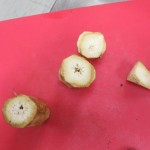

Wash the burdock root and trim the edges. Scrape the outer edges with a potato peeler and cut into three to four inch batons. Place baton on cutting board trim the outer edge of the burdock using the burdock ring as a guide. Inside the ring is what we are using. Cut down the length of the baton halving the root then slice very thin matchsticks. Cut them in two to end up with one to one and a half inch sticks.
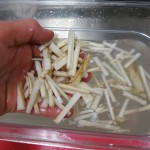
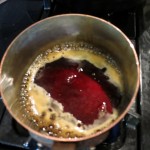
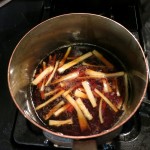
Mix the water and salt for the brine mixture and stir until disolved. Place all the cut burdock in the brine for two days. Take out and strain. Place the pickling water, soy sauce, rice wine vinegar and the maple syrup in a pan and bring to a boil. Add burdock and turn off heat. Leave on the stovetop to cool down. When cool place in the refrigerator for two days.
For the Nama-yuba:
5 to 7 cups soymilk

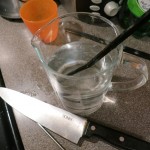
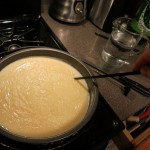
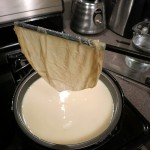
You will need a large cast iron skillet filled with one inch of water and a gas-burning oven, (electric will never hold the temp at 175 degrees.) Find another pan and fill with the soymilk. Test that the upper pan will sit inside the cast iron skillet water like a double boiler without overflow and turn the oven on high. Using a thermometer (only stick it on the side of the soymilk pan) wait until the temperature reaches 175 degrees and turn the gas up or down as needed. I’ve found that constant vigilance is needed. Do not let the soymilk come to a boil. If the soymilk is higher than 175, no skin will form. As the skin forms, take a chopstick and dip it into some water so it won’t stick too badly, (it will stick,) to the skin, (I used some olive oil on the chopstick.) The skin will start to stick to the side of the pan so you have to take a small knife and gently cut loose the sticking skin.
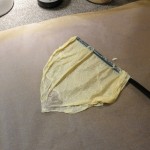
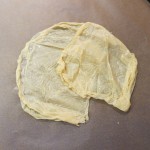
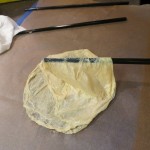
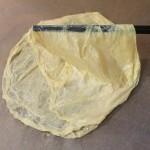
Now is the moment of truth. After 7 to 10 minutes, the skin will seem sufficiently thick for a “pull.” You can use your finger to test the raft and see if any side sticking is occuring and to see how thick it is. When you are ready, push the chopstick under the middle of the raft horizontally and try to reach the other side of the pan. Pulling the chopsick up, you will see the skin fold in on itself. Some really great yuba makers grab it on the edge for a true round yuba, (good luck with that!) hold the skin up and let drip for a minute then place on parchment. Repeat this processs eight times laying layers on each other to produce a pizza round.
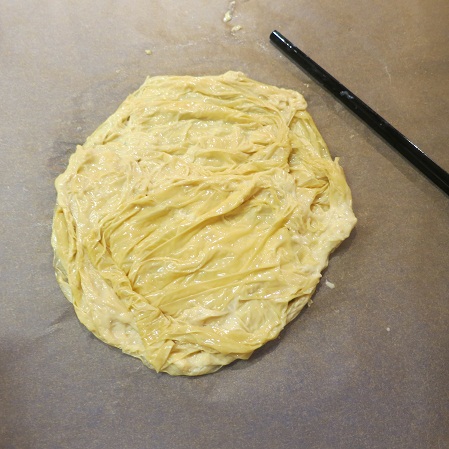
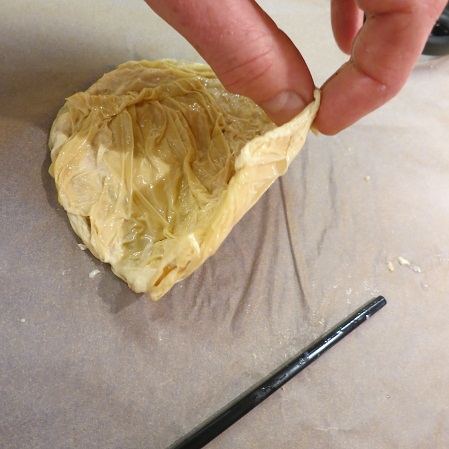
The skin will be somewhat wet and you can dab with a paper towel to dry it. Place another piece of parchment on top of the yuba and start other prep. Congratulations!
For the strawberries:
15 strawberries
1 tablespoon sugar
1 tablespoon balsamic vinegar
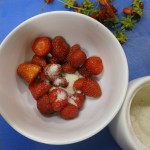
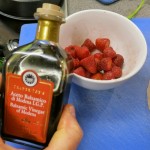
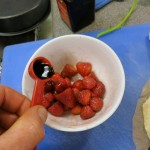
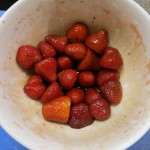
Place the stawberries in a bowl and dump the sugar on them. Wait 15 minutes tossing the fruit every minute to coat then add the balsamic. After another 15 minutes the juices will be oozing out. Take the stawberries and cut each in half.
For the New Zealand spinach:
1/4 cup spinach
1 tablespoon extra virgin olive oil
pinch salt
splash balsamic vinegar
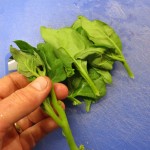
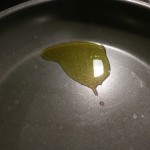
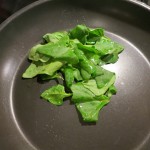
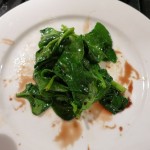
Take the buds and leaves from the spinach and add to the hot olive oil for only five seconds then place on a plate to cool and add a pinch of salt and a small splash of balsamic vinegar.
Final pizzette assembly:
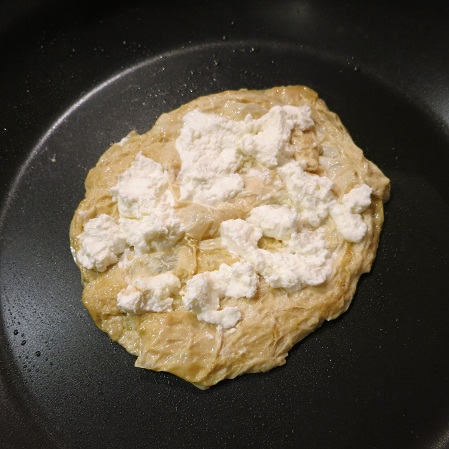
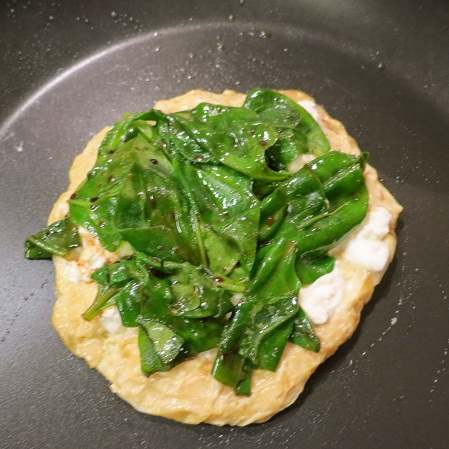
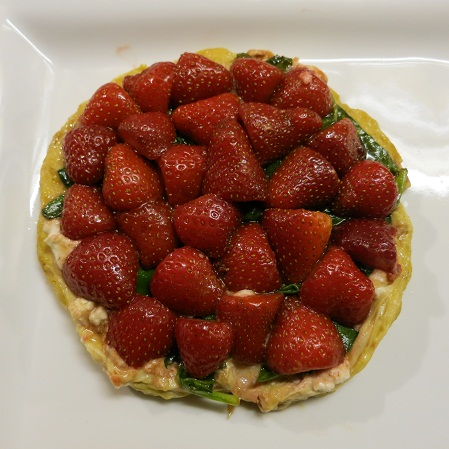
Gently take the yuba round and place in the oiled pan from the spinach saute’ on medium high heat. Wait only five seconds and gently flip. This is only to warm the yuba up and it may be difficult to turn so be careful. After the flip, place the cheese, spinach and strawberries on the yuba and slide onto a plate.
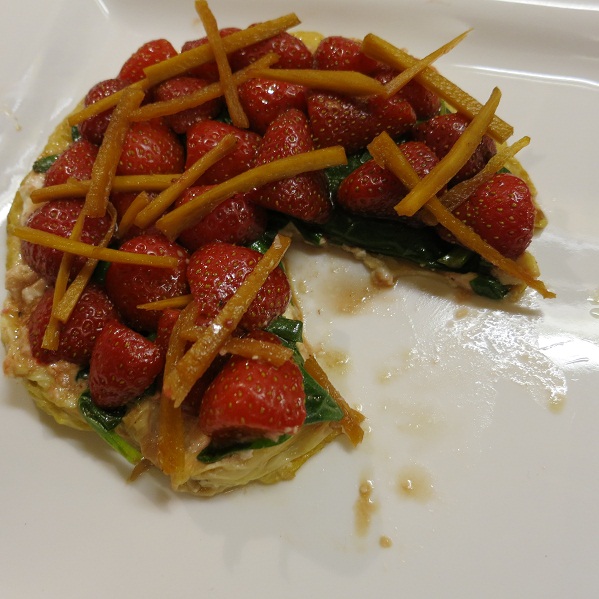
Place the burdock matchsticks on the pizzette and gobble it up like I did.
